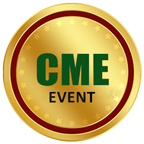
Noura Y. AlSalloum
King Fahad Medical City, Saudi Arabia
Title: Communication needs of palliative patients with communication barriers.
Biography
Biography: Noura Y. AlSalloum
Abstract
Objective: To explore the communication needs of cancer patients with barriers to communication, while under palliative care especially towards the last phase of life.
Methods: We use a reflective learning process in the context of an incident that happened in the palliative care unit in King Fahad medical city, Riyadh.
Case: 50 year old male with locally advanced squamous cell carcinoma of the skin of the face involving the lip, invading and destroying the maxilla and nose, had difficulty in talking. He had history of hearing loss, unrelated to the cancer but aggrevating his communication barrier. Worsening the communication gap was the language barrier where most of the health care staff were non –Arabic speaking and the patient could barely write in English. He was using a list of needs written on paper in Arabic and Englsh. The list was not comprehensive and needed to be frequently updated and he paper required replacements.
Reflection: We did a literature search to look for documented needs of cancer patients who could not talk. We added and updated the list of needs, printed it in both englisha and Arabic on a large A3 paper and laminated it to prevent damage. The patient could now use this locally modified Augmentive and Alternative Communication (AAC) method to communicate his needs to the health care-giver.
Conclusions: Palliative patients with communication barriers need AAC methods to effectively communicate their care needs. We recommend further studies to standardize the items and the language used in the list of palliative care needs to make it culturally relevant for use in the Arab population.

